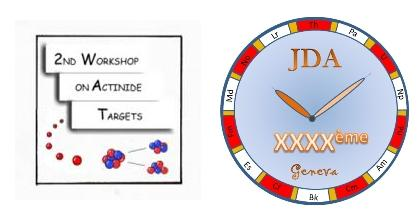Speaker
Description
Summary
The existence of radioactive disequilibria among nuclides in the decay series is an indication of recent fractionation events, usually related to gain or loss of the more mobile nuclides. Plant uptake is the first step in the major pathways of the trophic chain leading to man. Understanding the processes that govern the uptake of radionuclides in plants is very important in environmental control and surveillance. If plant uptake and accumulation are sufficiently high, plants can be used in cleaning up soils, sediments, and waters contaminated by low and moderate levels of radionuclides [1]. The assimilation of uranium was measured by the determination of U activity in plants samples and associated substrates from one inactive uranium mine tailing as a transport mechanism of uranium in the environment. Two species of plant samples were collected from 4 points located at different distances from the dump of the waste rock of the mine EM, Caras-Severin Country, Romania. The plants were cut at points about 5 cm above the ground surface in order to avoid direct contamination by soil. The total uranium concentration and the isotopic composition from vegetation and soils samples collected at the same sampling site, were determined by high resolution ICPMS Element 2 after separation and preconcentration of uranium. 234U/238U atom ratios in soil and vegetation samples as a function of distance from the uranium tailing dump. The results obtained for the soil samples show that the 234U/238U atom ratios in all soil samples, are clearly higher than the natural 234U/238U atom ratios, 5,54019E-05. Higher 234U/238U ratios in soil were observed at 100 and 200m from uranium dump, decreasing with further distance from the uranium tailing dump. When aquatic systems are in contact with minerals, selective leaching processes lead to preferential dissolution and transport of 234U, resulting in enhancement of 234U/238U ratio. The reason underlying the enhancement of the ratio is attributed, as a major cause, to a "recoil induced vulnerability to leaching". The mechanism is view as a creation of defects in the crystal lattice when the parent nuclide (238U) recoils during emission of an alpha particle, thus the daughter nuclide (234U) is in a microenvironment that is more susceptible to chemical attack than the parent [2]. Electron stripping during the decay process such that 234U is more likely to be in more soluble U(VI) state, facilitating the solution of this isotope by a surface etching process[3]. In the vegetation samples collected up to 200 m from the uranium tailing dump, half of the samples analysed presented an enhancement of the ratio 234U/238U ratio being always higher in grass than in Tussilago farfara. The mobility of uranium in plant tissues is limited, as it tends to adsorb on cell wall materials; therefore, concentrations are typically higher in tissues found lower on the plant and are highest on the root surfaces [4]. It was presented correlations between 234U/238U ratios in grass and Tussilago farfara and in soil where the plants were grown. Although these plants were grown and harvested simultaneously, we can see that both 234U and 238U were more easily transferred from soil to roots of grass as compared as compared to transfer of these radionuclides from soil to roots Tussilago farfara.
Plant radionuclide concentrations are not so often linearly related to soil radionuclide concentrations. Nonlinearity can complicate the measurement of bioavailability, because each plant and soil combination may have a unique curvilinear relationship. The study of temporal variations of 234U and 238U in plant showed that short-term dynamics of radionuclide plant concentrations are rather significant and species-specific.
References
[1] P. Blanco Rodríguez et. al., Science of The Total Environment, 361(1-3), 1-7 (2006)
[2] K. Kisogi et. al., Science, 173, 47-48, (1971).
[3] Jurado Vargas et. al., Nuclear Geophysics, 9, 567-578, (1995).
[4] L. S. Morton et. al., Journal of Environmental Quality 31, 155-162 (2002).
We acknowledge the "Actinide User Laboratory" program provided by the European Commission, DG-JRC, Institute for Transuranium Elements (ITU) and the financial support from the European Community-Access to Research Infrastructures action of the Improving Human Potential Programme, DG-RTD, Contract No. RITA-CT-2006-026176.




